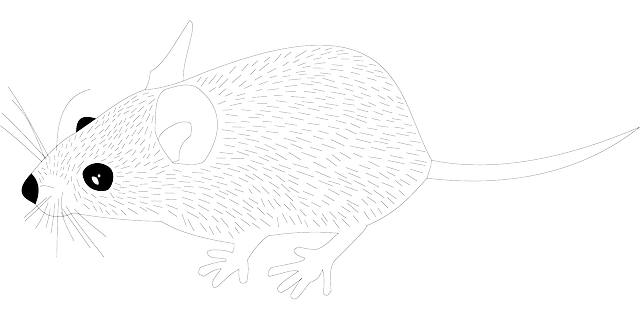Rats are adaptable creatures attracted to food, water, and shelter, often entering homes through small gaps. Effective rat prevention involves minimizing attractants by keeping spaces clean, securing garbage, eliminating open water sources, and patching entry points. Implementing strategies like regular cleaning, sealing entry points, storing food securely, and using natural deterrents or traps can create an unwelcoming environment for rats, significantly reducing infestation risk. Regular inspections are key to proactive measures. Adopting comprehensive rat prevention tips focusing on cleaning and sanitation along with sealing entry points is crucial for long-term rat-free status.
Tired of sharing your space with unwelcome visitors? Rats may seem like an inexorable problem, but understanding their behavior is the first step to effective rat prevention. This guide provides professional advice on identifying and eliminating attractants that draw rats to your environment. From recognizing common triggers to implementing robust strategies for maintaining a rat-free space, we equip you with the knowledge and tips for long-term success in rat prevention.
Understanding Rat Behavior and Their Attraction to Spaces
Rats are highly adaptable creatures with a keen sense of smell, hearing, and sight. Understanding their behavior is crucial in implementing effective rat prevention tips. These rodents are naturally drawn to spaces that offer food, water, and shelter—a triad known as the three basic needs for survival. They can enter through tiny crevices or gaps, often undetected, seeking out areas with ample resources and minimal disturbance.
To deter rats, it’s essential to minimize these attractants. This includes keeping your space clean and clutter-free, securing garbage in tightly sealed containers, eliminating open sources of water, and patching up any entry points or holes that might serve as potential access routes for these unwelcome visitors. By removing these inviting factors, you create an environment less appealing to rats, significantly reducing the risk of an infestation.
Identifying Common Rat Attractants in Your Environment
Rats are attracted to a variety of things found in our everyday environments, making it crucial to understand what draws them in. When it comes to rat prevention tips, identifying these attractants is the first step towards creating an unwelcoming environment for these pests. Common rat attractants include food debris, open trash cans, and any easily accessible sources of water. They are also drawn to warm, secluded spaces, such as those behind large appliances or in cluttered areas that offer hiding places.
To effectively reduce rat attractants, it’s essential to practice good hygiene practices, keep all food stored tightly sealed, and ensure trash cans are secured with tight-fitting lids. Regularly cleaning up crumbs and spills, fixing any leaks, and decluttering spaces can significantly deter rats from entering your space. Additionally, sealing entry points like gaps around pipes or wires can prevent them from finding their way in.
Implementing Effective Rat Prevention Strategies
Implementing effective rat prevention strategies is key to keeping your space free from these unwanted visitors. Start by identifying potential entry points—cracks, gaps in walls, or openings around pipes and cables. Seal these areas with materials like steel wool, caulk, or metal mesh to create a physical barrier. Regularly clean and maintain your surroundings, removing any food debris or waste that might attract rats. Store food in airtight containers and ensure garbage bins are secured and regularly emptied.
Consider using natural deterrents like peppermint oil, cinnamon, or cloves, which rats find unpleasant. Setting up traps or using rat repellents can also be effective, but always follow safety instructions and consult professionals for advice tailored to your specific situation. Regular inspections and proactive measures will significantly reduce the likelihood of a rat infestation.
Maintaining a Rat-Free Space: Long-Term Solutions and Tips
To maintain a rat-free space long-term, consider implementing comprehensive rat prevention tips that go beyond immediate solutions. Regular cleaning and sanitation are key; rats are attracted to food sources, so keeping your area spotless, especially in kitchens, is essential. Store food in airtight containers and avoid leaving any crumbs or mess behind.
Additionally, sealing entry points is vital. Inspect your space for any holes, gaps, or cracks where rats might enter and use appropriate materials to close these openings. This includes checking around pipes, wires, and doors. A rat-proofed environment not only prevents current infestations but also acts as a powerful rat prevention tip to deter future intruders.
By understanding rat behavior, identifying common attractants, and implementing robust prevention strategies, you can create an environment that discourages these pests. Regular maintenance and a proactive approach with rat prevention tips are key to keeping your space rat-free. Remember, a clean and secure environment is not only beneficial for your health and safety but also helps preserve the integrity of your property.
